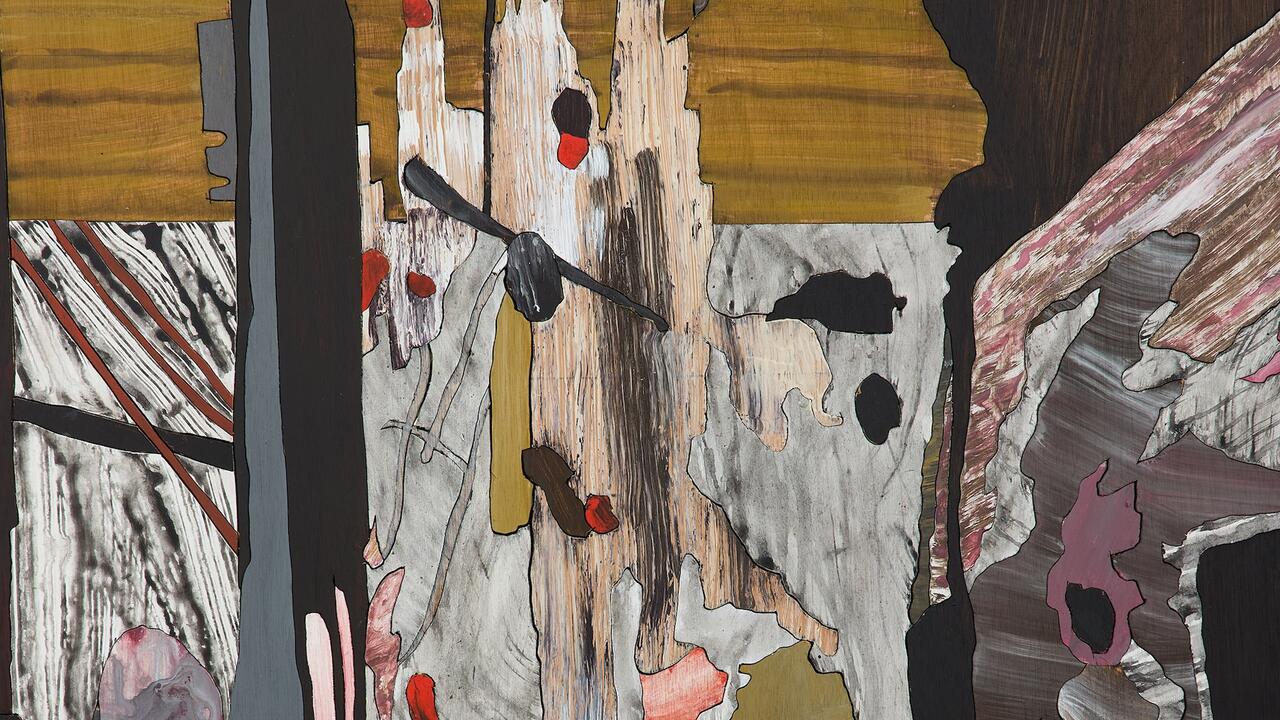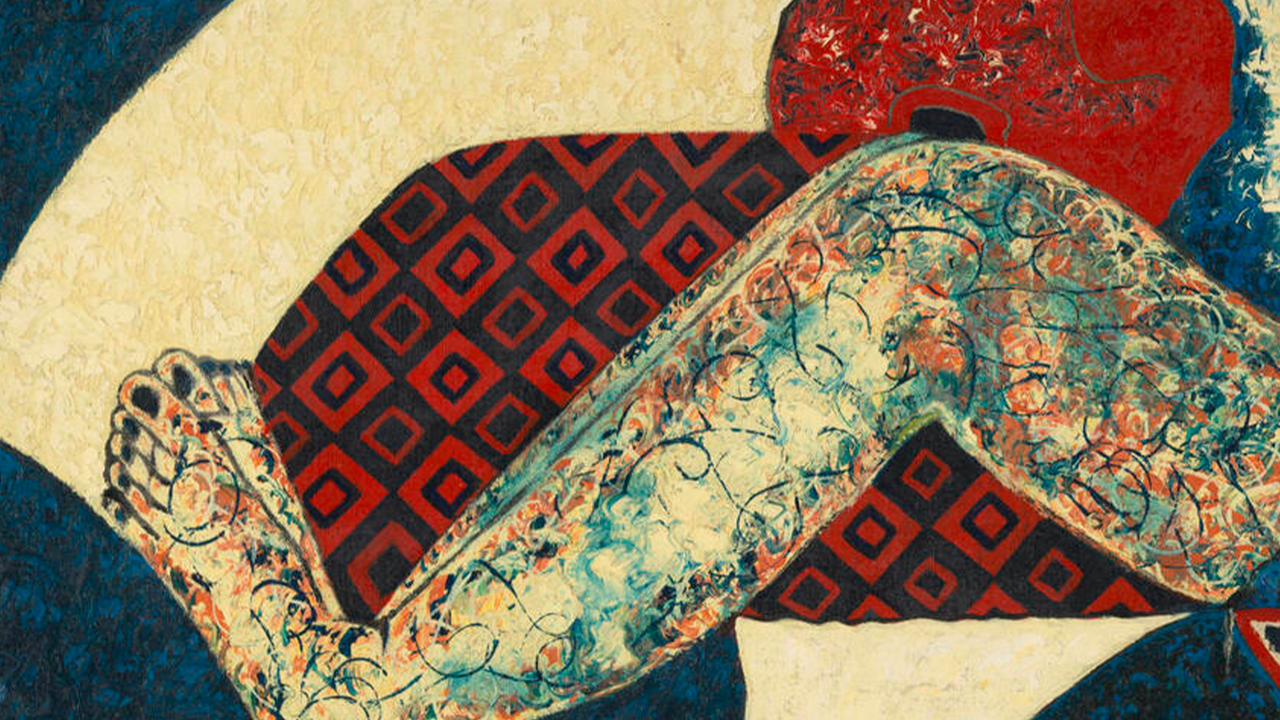Douglas Gordon’s Fractured Exercise in Autobiography
At Hayward Gallery, the artist explores authorship, satanism and the all-being ‘I’
At Hayward Gallery, the artist explores authorship, satanism and the all-being ‘I’

‘What Have I Done’, the title of Douglas Gordon’s Hayward Gallery show, was untroubled by punctuation. A question mark would have transformed it into a lunatic’s lament, a lazy guy’s sigh, a murderer’s moment of clarity. Equally, a full stop would have signalled a summation (this was, after all, a mid-career retrospective) or a pause before a new body of work, like a new sentence, appears. As it was, ‘What Have I Done’ was a strange appellation. The ‘I’ felt out of place, a fugitive character. But perhaps this should’ve come as no surprise. ‘I’ is a slippery syllable in Gordon’s art. In an exhibition that was an exercise in (albeit fractured) autobiography, it seemed even more slippery.
Despite the unpunctuated prose of its title, the show had its share of commas, colons and exclamation marks. These came in the form of the mirrors, red lights (glowing like lava) and small works that dotted the exhibition space. Between them big pieces were projected on to large screens. The first of these, 24 Hour Psycho (1993), flickered a few feet from the exhibition’s entrance. A tape of Hitchcock’s classic thriller that plays for a day, it’s the work that - more than any other - made Gordon’s name. Watching the slo-mo raindrops spatter against Janet Leigh’s windscreen, I thought about the thousands of words written about the piece, its punishing tour schedule, its excessive exposure. It was an ingenious idea to strand 24 Hour Psycho at the show’s start, the kind of move Bob Dylan - mangling ‘Like a Rolling Stone’ at the beginning of a gig - might make. Unfortunately, it was the strongest work in ‘What Have I Done’, an endgame effort that made everything else in the exhibition seem, if not unnecessary, then slightly undernourished.
Fog (2002) was a case in point. On a large screen a guy who looked like Gordon (but wasn’t) watched his skinny silhouette stain a wall, steam swirling around his ankles. This image was repeated on the other side of the screen - deliberately out of synch - so that from time to time it appeared as though the guy was being stalked by a doppelgänger looking at him looking at his shadow. The work was based on James Hogg's Confessions of a Justified Sinner (1824), a novel in which a man’s encounter with his double (who is, in fact, the Devil in disguise) encourages him to commit a number of bloody crimes, beginning with the murder of his brother. Black Star (2002) - a dark, velveteen chamber illuminated by ultraviolet strip lights - also alluded to Hogg’s text. Here passages from the book were played over a sound system, while the lamps slowly resolved themselves into a Satan-summoning pentagram. The artist’s aim appeared to be a doubly diabolical invocation, an ecclesiastical empurpling of a satanic rite. But the strip lights suggested something altogether sillier, some Las Vegas sub-basement where Dan Flavin parlays with the Prince of Darkness. Like Fog, Black Star failed to live up to its fascinating source material.
For all the cracked identities and creepiness that suffused Gordon’s show, there were few genuine Jekyll and Hyde moments. Maybe that's because the binaries he deals with aren’t so much good and evil (art abandoned Manichaeism a long time ago) as self and not-quite-self, the all-being ‘I’. It was the smaller works, such as Blue (1998), that best illustrated this. On a pristine sheet a pair of hairy hands - both belonging to Gordon - fumbled, fucked and groped. The piece was pretty obscene, but it was quite funny too - a joke about art, onanism and self-fulfilling fantasies. It was also, like a lot of Gordon’s oeuvre, about authorship. Sex, of course, is largely learned behaviour, and in Blue the artist’s caresses are all second-hand, cribbed from another context.
The final two rooms featured autobiographical assemblages. The first was an almost complete collection of Gordon’s films from 1992 to the present, shown on mismatched monitors placed on plastic crates and crummy cardboard boxes. The second was a dimly lit disco where the soundtrack to Gordon’s gestation - The Stones, The Small Faces, The Lovin’ Spoonful - seeped from the speakers. Both works claimed a kind of offhand cool. Both were bogus. Gordon’s art is at its best when it avoids chronicling its creator - that’s why 24 Hour Psycho and Between Darkness and Light (After William Blake) (1997) work and Fog, for example, doesn’t. Letting ‘I’ loose, it seems, is a dangerous game.
Main image: Douglas Gordon, 24 Hour Psycho, 1993, installation view. Courtesy: the artist and Gagosian























